|
You know that “What if fall... but oh darling what if you fly” quote that’s been floating around the internet? At times that quote felt inspirational but as of late it’s been annoying the hell out of me. One thing I learned somewhere along the path of through social work school and becoming an equine assisted therapy facilitator is to be aware when something bothers me and ask myself why. This allows me to look inside myself and figure out the true source of my anger/fear/frustration and deal with it accordingly. I have found this to be an invaluable tool in my personal development…it means no longer being a victim of my emotions but instead learning from them. Full disclosure here…there are times I am fully aware I need to explore a reaction to figure out what is really going on but I purposely avoid it because, let’s face it…being honest with yourself and figuring out your truths is both difficult and scary. Also, having the answers means you have to do something about it which is often even more difficult and downright terrifying. In addition to my recent annoyance with the “what if you fly” quote, I have been struggling in two other areas of my life and sure enough, when I think on it, all three appear to be related. I’m going to share these struggles with you for two reasons: 1) I hope putting this out there will help me move forward; and 2) I believe it could potentially help you as well. So, here goes: I haven’t ridden my horse in months which is both shocking and sad to me. I have a variety of excuses, some of which are at least semi-valid. The primary two being lack of time during foaling season (January-June = if it doesn’t happen in the foaling barn, it doesn’t happen to me) and the fact I have no saddle that fits my horse. It is well past June now and I have plenty of time to ride Farletta. I still am saddleless though. Ready and waiting... don’t need a saddle to ride but I also haven’t ridden bareback since before the serious fall I had from Farletta in 2007. I have come close on a few occasions to talking myself into trying bareback again. I even recently took a picture of Farletta as I stood on the tailgate of my truck in mounting position with the lyrics “wishing and hoping and planning and praying…” running through my head. I still haven’t been on her (What if I fall?).
What if I fall indeed. Lots of people fall off their horse. I have on several occasions. Usually it is no big deal. You dust of your pants and your pride and get back in the saddle. In the morning, you wake up a little stiff and sore but hey, that’s life, right? The key word here is usually. When I fell off Farletta in 2007 I broke 7 ribs, partially collapsed one lung, tore my hip flexor and damaged my rotator cuff (OUCH!). It’s not so much a question of what if I fall but more, what if I fall like that again. It terrifies me and as a result, I’m stuck, hovering above my horse’s waiting, willing back; unable to make a move. As I continue to grapple with this riding problem I see a very definite parallel in another area of my life – my memoir. I’ve been working on it for a few years. I want to publish it someday soon (like last summer) but for some reason I keep getting stuck. I have been very close to putting out the proposal to publishers but I somehow can’t seem to find the time or motivation to do the hour or two of polishing the proposal needs to be ready to go. Why is that? In both situations, fear is blocking me. With Farletta and riding bareback (currently my only riding option) it is fear of falling. I suppose it is the same with the memoir…I pour may heart and soul and a few deep, dark secrets into the pages of my memoir and send it out there only to receive rejection letters (you suck, don’t quit your day job, by the way…your life is bizarre…have you considered taking up residence in a psych ward?). So there it is, all laid out. Fear. Fear of failure, fear of getting hurt. Normal, right? Now I know and I am better prepared to move forward because of my awareness. I challenge you to look the things in your life that aren’t serving you (What makes you angry? What are you avoiding? Why are you procrastinating?) and make an honest, personal evaluation. Ask yourself “Why does this make me so angry?” (hint: the answer is not as simple as “because it’s stupid” or something similar -- ask yourself why you feel that way, the deeper you go, the more you learn). Now I think I’ll go talk to Farletta about going for a little ride. I think if I can move past that, perhaps I can also move forward on the book proposal. I might fall but more likely than not, if I keep at it, eventually I’ll fly.
2 Comments
Three women wait quietly outside the paddock holding a large bay mare. The youngest of the women sits in the far corner of the paddock on the top rail of the black board fence; her crystal-blue eyes watch the mare intently. A middle-aged woman with fiery red hair and deep green eyes stands with her arms folded across her chest, leaning her left shoulder against one of the thick, wooden fence posts. Near the paddock gate, a slender woman with long, grey hair and multi-colored eyes watches the bay mare closely from her tattered old folding lawn chair.
Inside the paddock, the mare circles restlessly, working her soft, black muzzle back and forth along the ground. Her large belly swings gently side-to-side as she moves about the enclosure. She stops to paw at the ground, her sharp, heavy hoof sending clods of dirt and bits of grass flying out behind her. Looking up from her pawing, the mare snorts loudly and shakes her graceful head. She looks at the woman sitting on the fence; flaring her nostrils she blows out a deep breath before she begins circling once again... MORE 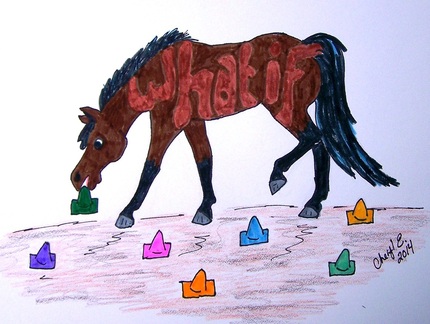 Three equines and three women occupied the arena that day. The three women were connected by a common theme. Each woman was standing in the face of significant change -- a thread of uncertainty which held them loosely together. For one woman, change was intertwined with stress, for another, change requires the constant reminder to “stay calm.” For me, change’s haunting companion is What If. The women huddled together in the arena talking about the impact of change on their environment. To each woman, environment held a slightly different meaning and significance in the face of change. For me, I have been actively seeking to change my environment, plucking out the good and positive memories from an often dark and foreboding past. Reconstructing my life from tattered bits of two very different tapestries – attempting to grasp and hold on to the parts worth keeping and, with difficulty, give up the dark parts which no longer serve me, letting them slip away, now powerless but never forgotten. My companions helped me spread color through our new environment, tossing a rainbow of traffic cones and pool noodles onto the mud-colored arena surface. Together we moved heavy, wooden poles to our new, changed environment, arranging them until we had created a space completely different from the one we started with. We then turned our attention to the three equines. Each of us selected an equine and named it. A small, roan pony was named “Stress,” a large pinto was named “Stay Calm” and I named a solid bay gelding “What if.” Our goal was to each move our chosen equine into our new environment -- moving those parts we struggled with, into change. I walked over to What If who was standing nearby. I reached up toward his head intending to encircle his neck with my arms and guide him over to the environment which represented change in my life. What If would have no part of my plan, constantly moving his head out of my grasp, pulling away from me and standing stubbornly just where I found him. The more I struggled with What If, the more he resisted my efforts to control him. After several failed attempts to control What If, I paused to contemplate my next move in my effort to bring What If into my changed environment. As I stood quiet and unmoving, trying to figure out what to do next, What If walked into the center of my changed environment and stood quietly, nosing one of the colorful cones. I walked toward What If, wanting to stand with him in my changed environment but as soon as I moved into his space, What If walked away. I went after him, wanting to bring him back to my changed environment but I could not budge him, What If resisted all my attempts to control him. I gave up my efforts to control What If and stood quietly once again. As I stood in silence, What If returned to my changed environment, looking around inquisitively but disrupting nothing. In that moment the lesson became clear. What If will take care of itself. The more I try to control the “What If” in my life, the more I struggle and the less I am able to accomplish. What If doesn’t need me to worry over it, I cannot control it and any effort to exert my will over What If is met with frustration and resistance. With my new found discovery tucked safely in my mind, I looked around the arena to see how my companions were doing. By letting What If take care of himself, I was available to help my companions reach their goals. I went to each and asked if I could help them. When we were done, we stood and watched as What If began driving Stress all around the arena in a decidedly non-productive pattern taking them far away from our newly changed environment. The three of us stood watching, with Stay Calm standing quietly over us, his legs firmly planted like the trunk of an enormous tree; a tree which would bend and sway with the winds of change but never break or fall, never losing ground to follow the whims of What If as he worried after Stress. In their quiet way, the horses had spoken once again. Horse had become teacher and the lesson was learned. 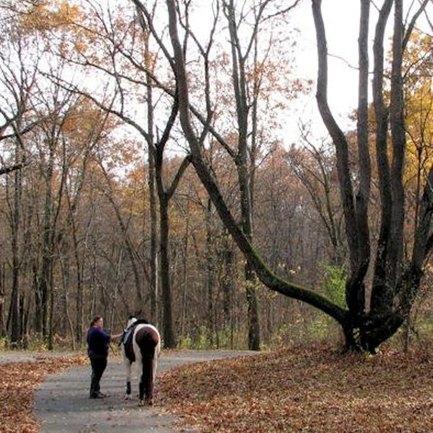 Photo Credit: Elizabeth Keesler Photo Credit: Elizabeth Keesler Many people watch me work with my horse, Farletta and wonder why can’t their horse be the same? By that I assume they mean the version of Farletta who stands quietly, follows willingly, rides without a bridle and responds to the slightest shift of weight in the saddle or the most subtle of visual cues from the ground; not the version of the Perfect Princess when she loses her patience and succumbs to the “Four P’s” – pacing, pawing, prancing and (inappropriate) peeing. What people don’t realize is it has taken years of work to get Farletta to be the horse she is today. And she is still learning, we both are. Sure, we have come a long way from the little mare who used to jump out of the arena, break her halter and run away, and lay down while I mounted her but it has taken hours upon hours of patience, consistency and flat out hard work. The change was gradual, it didn’t happen in six months or even a year – it is ongoing. Each time we crossed a hurdle, a new one would pop up. That is horse training. That is life. Training a great horse involves cultivating a great relationship. Taking the time to work through the (sometimes seemingly endless) problems, learning to communicate in a way your horse understands, learning to actively listen (not just seek to be heard), and always approaching the relationship with kindness and a gentle but firm hand. You will take great steps forward and at times you will stumble backwards. That is horse training. That is life. A horse is a living creature and just like people, they have different personalities, different learning styles, different physical capabilities and different mental capacities. It is your job to learn about your horse, how that horse thinks, how s/he learns, and how s/he communicates. Often behavioral problems stem from a lack of understanding on the part of the horse, and/or a breakdown in communication between the horse and handler. A horse that has been abused or is being re-purposed has a special set of circumstances. If the horse was in an abusive situation for many years or a non-abused horse moving from a completely different environment with a different set of “rules” (such as a racing environment) then you must not only build the relationship but you must undo the negative the horse has already learned. This won’t happen quickly, if it took five years for the horse to develop the bad habits and behaviors it has today; is it unreasonable to expect it to take as long to undo the damage? Building a relationship with your horse is a long term commitment. Just as in life, we all make mistakes and that is OK. This is how we learn. In a future post I will discuss different ways we can listen to what our horses are telling us. Until then, give your horse a carrot and a scratch on the neck from me.
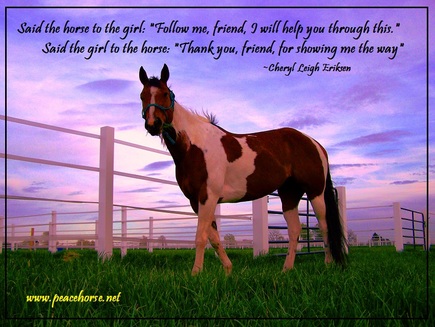 I see your multi-colored, hazel eyes staring deep into mine questions, confusion, fear, and anger shoot back at me like hurtful daggers which tear jagged holes in my soul my words are twisted into tools of hatred and destruction I feel powerless against what lurks inside you "Why are so hard to love" I say as a look into your multi-colored, tear-filled eyes You have no answer, just blank and desperate silence I shake my head in defeat, and turn away from the mirror. I wrote that poem. Just now, as I caught myself spiraling down the old, familiar drain which leads to the foulest reaches of my desperate darkness. This time, I catch myself. I peer over the crumbling edge, looking into the darkness just long enough to retrieve this poem and remind myself that depression is always lurking, it is dangerous, it is deadly. I wasn’t always able to catch myself; many times I sunk down so far I nearly lost my way out. My soul writhing in its death throes as I attempt to exist in a place filled with pain, fear, questions, sorrow and desperate hopelessness. There is no logic, no truth, no meaning, no life. It is not a place I would send my worst enemy. I have always avoided talking about it. However, silence is quite deadly. The cultural stigma which shames the depressed prevents those afflicted from seeking help. I am not merely sad, I am not wallowing in self-pity, I am not seeking your attention, I am not selfish. I can’t “just get over it.” I am uncomfortable writing this but I feel the message is too important. As I said before, silence is quite deadly. A large part of my ongoing healing process involves developing my self-awareness. Being aware enough of what is happening to me to recognize when my thoughts are heading in the wrong direction. To recognize when I am not safe and use tools I’ve learned over many years of work to bring me back to a place of relative peace. Writing is one tool. Work with horses is another. Horses are excellent teachers of self-awareness. Their survival in the wild depends on their ability to listen to their bodies. The horse is hungry, she eats. The horse is restless, she moves. The horse is in pain, she rests. The horse senses incongruence in another being (say one thing, do another), she retreats. The horse senses danger in the tension of the environment around her, she turns to her herd mates for safety. The horse brings this self-awareness to the horse-human relationship. Many people believe this is why equine assisted psychotherapy is so effective. The horse is very good at pointing out incongruence in the people around her. My own horse will not tolerate incongruent behavior in me. Putting on the “brave face,” leaving my problems at the door, or otherwise presenting myself as happy when inside I am not (you know, the way society expects us to behave) will produce several undesirable behaviors in her. If she is free she will move (or even run) away from me; if she is tied or otherwise confined, she will dance around, fret and generally show signs of discomfort in my presence. In extreme cases she will become very nervous, pawing the ground, stomping her feet and calling out to other horses. If I acknowledge how I really feel, she will go back to normal. It is really quite amazing to experience. Someday I hope to develop an equine assisted therapy program for depressed individuals to work on building their self-awareness. I will add this to my growing list of projects. In the meantime, if you are depressed or have symptoms of depression, find someone to talk to: a best friend, a therapist, a pastor, a counselor, a family member – anyone you feel comfortable talking to. It helps if you can find someone who understands depression as a disease vs. someone who subscribes to the “just get over it” lie. If you have access to a horse on a somewhat regular basis, be aware of how the horse responds to you from day-to-day. When you observe an unusual behavior, don’t assume it is a problem with the horse – it seldom is. She may be trying to tell you something. Take a look inside yourself and be honest about what you discover – it may be a very important step along your path to healing. 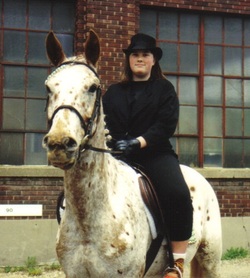 The cold wind blew through the open door of the barn; dust and bits of hay swirled just above the ground creating a miniature whirlwind which whisked around the holding pen located outside the main show arena. I watched the tiny whirlwind as it twisted about as if in celebration of finding so much loose dust and hay in an otherwise frozen world. The ground outside had been frozen for months. Snow and ice clung to every surface. The January sun was blindingly bright as it reflected against the white landscape just outside the door. It looked warm but it was not; at least not here where winter hung over us like a shroud and the brilliant sun taunted us with distant promises of warm summer days. The tiny whirlwind finally found the “sweet spot” it was looking for; that space between the door leading outside and the door leading into the arena. As it moved into this space it was joined by a sudden gust of wind and for a brief moment the whirlwind blew upward lifting dust, hay and dried leaves in a sudden blast straight up before dropping them down all around. Splatters lifted his head slightly, flaring his nostrils as the whirlwind dropped its collection of debris around his front hooves. “Easy.” I said softly as I reached forward to stroke the gelding’s chestnut-spotted neck. I gently took up the reins and asked Splatters to step backward as I tried to position us out of the wind tunnel created by the open doors on either end of the large metal building which housed the arena and the holding pen. Showing in the winter time was new for both me and Splatters, the five-year-old gelding I was sitting astride. The show was held by one of the local riding stables as a schooling show. I liked the casual atmosphere with no fancy show clothes required which allowed me to wear my winter riding gear. I shivered as I sat astride Splatters waiting for our class to be called. The first call for the class before ours crackled over the ancient speaker hanging in the corner of the holding pen. “That’s our cue,” I said aloud to Splatters, “let’s go warm-up a bit.” I smiled internally as I thought about the irony of going outside to “warm up.” Of course in the horse world “warm up” is something we do for the benefit of preparing the horse’s body and mind for the task to come; if I’m lucky, I thought to myself, I’ll get warmer too from the physical exertion of riding the horse. Splatters and I carefully wove around and between the other horses and riders in the holding pen as we navigated out the big barn doors to a relatively smooth and flat but utterly frozen patch of ground. I walked Splatters on a long rein allowing him to stretch his head and neck downward and outward as he lengthened his walk to his usual, swinging and ground-covering gait. After a while, I gently squeezed Splatters into a slow trot. The gelding moved forward willingly as we made a few circles in each direction before breaking back down to the walk. “It’s just too crappy,” I said to Splatters as I eyed the frozen ground, “that’s all we can do on this footing.” Splatters and I continued at a walk on a loose rein as I waited for our class to be called. I had hoped for a better warm up but I didn’t dare go faster than the slow trot on the questionable footing. Splatters stretched his slender neck and softly worked the bit in his mouth. The loud speaker inside the barn crackled to life once again as the announcer made the first call for the huntseat pleasure class. “That’s us,” I said aloud as I reached out and stroked Splatters on the neck. I waited until the final call which meant the horses were actually entering the arena so I could keep Splatters moving until the class started. When the call came, I steered Splatters back toward the open barn doors. Together we rode through the holding pen toward the open gate of the show arena. As we neared the show arena Splatters suddenly took an off step, then another, and another. This horse is lame! I thought to myself. My 14-year-old heart dropped at the thought I had perhaps done something to injure Splatters. I should have been more careful! I reprimanded myself. I quickly turned Splatters away from the open arena gate. It was too crowded around the gate to dismount safely so we wove through the sea of horses and riders to the open area of the holding pen. After we broke free of the crowd the strangest thing happened, my formerly sound but suddenly lame horse was now formerly lame but suddenly sound! I walked Splatters out a few more strides and he moved just as smoothly and soundly as ever. “That’s weird.” I whispered under my breath. Perhaps he had stepped on a stone or something on the way to the arena gate and that had caused the lame steps? “Well,” I said to Splatters, “it seems you are fine now; let’s go back before we miss our class.” The gelding snorted his response and together we turned back toward the arena. As we neared the gate Splatters again began to limp on his right front leg. Once again I turned him away from the gate, riding through the crowd to find an open space to dismount. Much to my surprise, Splatters once againg was suddenly sound as we moved away from the show ring. “This is a game, isn’t it?” I asked the gelding. “Not funny.” I stated as we again turned toward the gate. “Are you going to bring him in this time?” the man working the gate asked me. “Yes.” I said. “He looks a little off,” the man called after us as we trotted through the gate, “is he lame?” “No, he’s not lame,” I called back over my shoulder, “he’s just pretending.” About five strides into the arena Splatters finally gave up his act and was miraculously sound once again and remained sound for the rest of the show. Later that year at one of our summer shows he tried the same act and fooled me again (albeit briefly). He knew I wouldn’t make him work if he was lame but as clever as he was, Splatters never seemed to figure out he had to keep up his act a bit longer if he truly wanted to get out of showing. As it was, Splatters is the only horse I’ve ever known which was lame only when walking toward the show ring. It’s been over 20 years since I worked with Splatters who was never really mine but was a horse I borrowed for 4H. However, I allowed my heart to believe he would someday, somehow be mine and I was crushed when it was time to say goodbye after four years together. I have worked with literally hundreds of horses since then and I’ve found Splatters’s lameness act to be quite unique among his equine colleagues. I have been thinking about the phrase “horses don’t lie” quite a bit lately as I am reading a book by that title, written by Chris Irwin. The story of Splatters feigning lameness to (I assumed) get out of showing is the first thing which came to my mind when I selected this particular book to read. In his book, Irwin tells stories of how he developed his own style of horsemanship as he learned to turn away from the harsh “training” methods he learned as a young man to something he calls “no resistance horsemanship.” Irwin, like so many other horse people (famous and not) discovered it was better to listen to the horse and work with it rather than simply try to dominate it. He also goes into a somewhat in-depth discussion on the horse’s role as prey vs. the human’s role of predator and how this relationship impacts our ability to truly gain a horse’s trust. Irwin then draws many parallels between “seeing like a predator and thinking like prey” and how we should treat our world and each other. The book touches on one of the greatest lessons we can learn from our horses: simple honesty in everything we are and everything we do. It is a lesson on the importance of being honest not only with each other, but also with ourselves. Horses never lie. What does that phrase mean to you? For me it speaks to the honesty with which the horse presents itself to the world. They are truly centered and connected not only to themselves but to their herd (be it horse or human – have you tried to hide your nerves from a horse? Doesn’t work so well; they always know). In the wild, a horse’s survival depends on its ability to present the same on the outside as it is on the inside – the other horses in the herd rely on this honesty due to their reliance on each other for mutual safety. A horse doesn’t hide its fear, pain, sorrow, anger, joy, exuberance or any other emotion. We call them reactionary – they simply react to their environment rather than using logic. But that’s a human response to horse behavior, isn’t it? Why do we hide our feelings and emotions? Can you think of the reasons? Does it serve us to hold anger or sorrow on the inside while presenting a false happiness on the outside? Does it truly serve others? Here in America our culture tells us to measure success in empty things like money, high-powered jobs, body type, physical appearance and power over others. We learn early to hide what is “wrong” with us because there is a very real fear being perceived as weak or of little value. Look at how we’ve stigmatized people with depression or other mental illness. What kind of assumptions do we make about a person in a wheel chair? A person who is deaf? A person with a physical deformity? A person in poverty? The man on the street holding a sign asking for help? A person with differing cultural norms and values? What if we could be more like the horses? What if we could show fear when we are afraid or show anger when we are angry? What if it was OK to be who you are and show all of yourself to the world? What if we could talk about our differences and seek to understand rather than judge the differences we see in each other? What if we stopped pretending to be something we’re not and decided to simply be who we are and embrace it? A friend of mine is fond of saying “What other people think of me is none of my business” and it’s quite true. Can you imagine if your horse was afraid to go on a trail ride because it was worried what the other horses would think? Did he cross the log correctly? Does her butt jiggle when she trots up the hill? What will the other horses think if I spook at the water crossing again? If I pin my ears at that mare because she is in my space (disrespecting my boundaries) will she not want to be my friend anymore? Sounds silly, yes? But we do this all the time. I think of all the tragedy in the world which could possibly be avoided if we could just learn to present honestly on the outside what is truly on the inside. How many suicides could be prevented if depression wasn’t stigmatized as some sort of mental deficiency or weakness? How much better could we understand one another if we didn’t try to use our words to manipulate? What would happen if we asked questions with genuine curiosity rather than asking with the intent to make our own point or further our own truth? You know, asking something because you really want to know the answer not because you want your belief to be validated (i.e.: Tell me about your beliefs vs. Why don’t you believe in____?). So, is it true? Do horses never lie? Did Splatters lie or was he trying to tell me something? Perhaps he was just a very clever horse who was playing on my sympathies in an effort to get out of work? Or maybe, as is true with so many people we meet, there was much more going on beneath the surface? Perhaps he was sending me a message I am only now receiving; to avoid the relational confusion caused by the incongruence of presenting myself differently on the outside than the truth which is on the inside? To embrace who I am; even if it’s a little scary. To accept all the gifts God has given me, even the ones I don’t yet understand. To be honest with myself in all things and to behave in a way that encourages the same honesty in others. What do you think? Please share your thoughts in the comments below. “I’m just 15 for a moment,
caught in between 10 and 20… …there’s never a wish, better than this. When you’ve only got 100 years to live.” The lyrics above are taken from a song sung by the group Five for Fighting. I will always remember when this song was popular. It was nearly spring time in southwest Michigan. There was still plenty of snow and cold left but a few scattered warm days bring the promise that warm sunshine will soon chase away the snow drifts and the green grass and tender flowers of spring will soon appear blanketing the earth with their glorious colors. Spring brings life and a promise of new beginnings. We shed layers of warm winter clothing as we emerge from our winter hibernation and the warm sun touches our face and we know we have survived the long, dark winter nights with the wind whipping and howling outside, threatening. Hope can be seen in each new flower, in the appearance of the red-breasted Robin and in each tiny, green bud firmly attached to its branch as it prepares to burst forth adding to the glorious rainbow of nature’s pallet. But for me spring of 2004 is none of these things. I sit in a dark, cold, windowless office at a desk made of steel and pressed wood from some tree which never saw another spring. I have just learned of the death of a friend. Sean was all the beautiful things in the world; the gentle smile of a stranger, the kind words of a friend, the vibrant colors of a glorious bed of spring flowers, the joy and exuberance of a new foal discovering the speed and agility of his legs for the first time, the smell of freshly cut grass, the feeling of sunshine on your face, a gentle breeze which caresses your cheek, the sound of the waves crashing around a Lake Michigan pier. Sean was just 35 when he died a horrible, slow death caused by the careless and selfish acts of others. A few weeks before his death, Sean had unknowingly driven through a cloud of anhydrous ammonia from a tank left unlocked by the side of the road. Anhydrous ammonia is an ingredient needed for cooking meth and it is suspected someone was trying to steal the chemical used to prepare farmer’s fields for planting. The deadly chemical cloud destroyed Sean’s lungs and he died a few days after his 35th birthday; his lungs literally disintegrating as he suffocated in his own blood. “I’m just 15 for a moment, caught in between 10 and 20… …Half time goes by Suddenly you're wise Another blink of an eye Sixty seven is gone The sun is getting high We're moving on…” The lyrics roll around in my head and I am constantly reminded that for Sean it simply wasn’t true. Life is so fleeting, our time is short. Sean crammed more love for others, more life and more living in his 35 years than many people do in twice as much time. He lived his dreams, he sought and found adventure, and he shared his amazing gifts with the world as he traveled on cruise ships working as a singer bringing joy to others with his amazing voice and personality. Sean saw the good in people and he had a way of bringing it out in every life he touched. But now his amazing light had been snuffed out and like everyone who loved Sean I was left with a painful, gaping hole in my heart which would never be filled. Sean and I shared a special connection through a favorite horse; a broodmare named Shamrock and her first filly; a horse I named Diva. I trained Diva as a foal and yearling until Sean’s sister bought her and moved her to Colorado in 1999. Each year Sean and I waited in anticipation to see Shamrock’s new foal. Sean wanted a tobiano filly like Diva; a horse he dreamed of owning one day. In the years since Diva was born, Shamrock produced only colts. A month after Sean died; Shamrock had a beautiful tobiano filly – the filly Sean had always dreamed of. I still think of that filly as Sean’s horse though I have no idea where she ended up. I’m sure the current owners have no knowledge of the dreams Sean had for his mare but I believe that mare holds a piece of Sean’s amazing spirit and capacity to love in her heart. “I'm ninety nine for a moment Dying for just another moment And I'm just dreaming Counting the ways to where you are Fifteen there's still time for you Twenty two I feel her too Thirty three you're on your way Every day's a new day Fifteen there's still time for you Time to buy and time to choose Hey fifteen, there's never a wish better than this When you only got 100 years to live.” It has been nearly 10 years since Sean died. I am now 36, I’ve been given at least one more year than Sean had…what am I going to do with it? Will I let my fears and insecurities engulf me, keeping me forever in a state of hiding in the false safety of winter hibernation? Or will I burst forth with the exuberance of spring? Will I listen to others with genuine curiosity rather than judgment? Will I treat others with respect even if their beliefs and values do not align with my own? Will I be brave and kind and live my dreams? Will I share my gifts with the world and show others what it means to love one another and all of God’s creation? The song still makes me a little sad when I think of what the world lost when Sean died. But now I no longer dwell in the sorrow of loss but rather I am reminded of how little time I have to be kind, to learn, to grow, to love, to share, to take in the smells that I love, to scratch the withers of a new foal, to hold a soft puppy in my arms, to feel the wind against my face, to listen to the call of the Lake, to sit in silence with my horse, to tell my family and friends that I love them. “There’s never a wish better than this; when you’ve only got 100 years to live.” If you would like to honor the memory of a special person please feel free to share your story here. In times of loss it can be helpful to others to read the experiences of others who have felt or are feeling the indescribable pain of missing someone whose existence was such an important part of their own life. After a nearly three year long battle with Equine Recurrent Uveitis (ERU); I had my mare, Farletta’s right eye removed (enucleation) on October 24, 2012. Even though I was convinced the enucleation was the best choice for her and the only way to put an end to the constant pain and the pharmacy of drugs Farletta consumed on a daily basis; it still was not an easy decision. I did a lot of soul searching for myself – Is enucleation really what is best for Farletta? I also tried to tune in to Farletta; how did she feel? Could she comprehend the choice I was trying to make for her? Did she understand the pain she felt could be stopped but it would mean she would lose her eye? As a communicator I have learned the animals which are the most difficult for me to read are the ones I am closest to. The strong emotions and spiritual connection I have with my horse can actually inhibit my ability to read her. It is not unlike viewing a pointillism painting; if you stand too close all you see are thousands of individual dots of color, there is beauty and emotion but the message is unclear. If you step back and view the painting from a distance you see how the thousands of tiny dots of color with all their depth and beauty come together to create an amazing picture and the message becomes quite clear. So it was when I reached out to Farletta; I was too close to see clearly. Was I hearing her or were my own emotions clouding my mind? By early October there was little room for choice; Farletta’s eye was rapidly deteriorating and she was suffering the negative effects of long-term use of steroids, anti-inflammatories and pain killers. The choice was now between losing her eye and preserving her overall health and well-being; the answer became clear and the enucleation was performed. There have been a few unexpected side-effects from having Farletta’s eye removed. She is not as messy in her stall, she is no longer suffering chronic back and hock pain, her coat is very shiny, her weight is healthy and easy to maintain. Farletta is happy and playful again; she does silly things and plays silly games. She seems younger, lighter and more comfortable with life in general.
There is one other unexpected side effect from Farletta’s enucleation; a rebuilding of a broken part of our relationship. Five years ago I fell off of Farletta and was severely injured. As a result of the accident I lost faith in my ability to ride and I was unable to fully put my trust in Farletta; a fact which broke my heart. I mourned the loss of that part of our relationship; fear was now a constant companion each time I tried to ride my
beloved friend. I pressed on year after year trying to rebuild my trust in my own ability to ride and also fully place my trust back in my horse; but each year I rode less and less frequently. However, something changed that first time I climbed on Farletta’s back following her recovery period from the enucleation surgery. I stroked her neck with my right hand and gently touched her right side with my leg. “I will watch out for you, Farletta.” I spoke quietly to my mare, “Do you feel my hand on your rein? Do you feel my leg on your side? When I am on you, I will be your right eye; my hand and leg will tell you what you cannot see and keep you safe.” There was no hesitation, no question, no doubt from Farletta. There was only trust. She rode that first day and every day since with absolute trust in me. She listens carefully to me and I listen carefully to her. We now experience a oneness we have not shared since before the accident. Farletta was able to do what I could not; trust without question, without doubt, without fear. On a cold December evening, I did what I haven’t been able to do for more than five years. Following a quiet ride that evening; I steered Farletta to the center of the large, empty indoor arena. The fluorescent bulbs overhead cast a harsh but functional glow illuminating the arena as bright as a flash of lightning on a dark night. I breathed in the smells of the damp earth and cold air. Slowly, I let the breath out; sinking into the saddle, signaling for Farletta to halt. I sat in silence astride my horse, remembering a time which seemed so very long ago; a time when my trust in myself and in my horse was strong and unwavering. I gently touched the left rein with my right hand; signaling Farletta to turn her head toward my left leg. Slowly I slid my left hand up her neck toward her ears. A tiny twinge of doubt crept in and I paused; touching Farletta’s ear before withdrawing my hand. I took another deep breath in through my nose releasing it slowly out through my mouth. I placed my left hand on Farletta’s neck, once again sliding it forward over her soft coat toward her head. Gently, I slipped my thumb under her headstall behind her ears, lifting the leather strap enough to get my fingers around it. Another deep breath; in through my nose and out through my slightly parted lips. “You ready for this?” I asked my mare. Farletta let out a soft sigh and tilted her ears delicately in my direction. With a slight forward movement of my hand, Farletta’s bridle slipped over her ears and the bit dropped from her mouth. Farletta stretched her neck outward and downward. She let out a soft sigh and slowly worked her mouth in the way a horse does to show contentment or satisfaction. Still holding her now empty bridle in my left hand and the rein ends in my right hand, I gently touched my legs to Farletta’s sides and she moved forward with confidence. We rode around the arena making patterns in the damp sand beneath Farletta’s feet. We navigated over poles and around invisible obstacles. It was just as before; we were just as before – feeling a connection and unity which can only come from a trust born when each individual believes not only in herself; but also in the other. 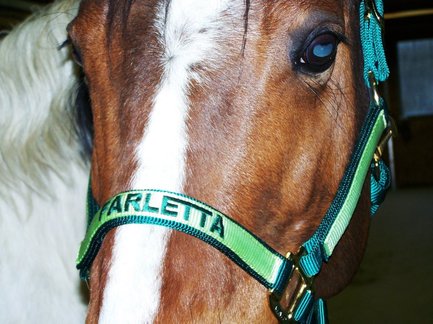 Many of us who become involved in Equine Assisted Psychotherapy and Learning (EAP/L) have had some previous involvement with horses. Perhaps you were among the lucky kids who grew up with a horse in the backyard or maybe you looked forward to horse camp each summer with intense joy and anticipation. Some have always loved and appreciated horses from a distance but were not able to realize their dream of horse ownership until adulthood; others have a deep tradition of spiritual connection with the horse as is the case with the Lakota. In her book, The Tao of Equus, Linda Kohanov writes about the “horse ancestors” who serve as spirit guides in her life and work. Within the world of horses, humans have developed a variety of relationships with our equine companions. On one end of the spectrum are the individuals who see their horses as important members of the family while at the opposite end are those who see horses as property used to make money; in between are those with some combination of values along the spectrum. I have been on both ends of the spectrum; an owner who sees my horse as part of the family and as an employee of those who have horses solely for the purpose of making money. So long as the welfare of the horse is the top consideration; I don’t believe there is a universal right or wrong answer regarding the most desirable horse-human relationship – just as in all of life; it is a question of what is right for the individual. The path which led me to my career in the field of EAP/L traveled both ends of the horse spectrum. When I was in high school my goal was to work as a professional horse trainer. I went to a college with an intensive, horse-focused degree program and went on to work in many areas of the horse industry in a variety of roles. In the worlds of high-end show horses and famous Thoroughbred racehorses, I lost what originally drew me to horses in the first place. I lost the relationship. Even though I was living and working on the world renowned Claiborne Farm (former home of Secretariat) and should have felt very successful; I, instead, was feeling shiftless and unfulfilled. I had lost my connection with the horse. For me, building a relationship with my horse, Farletta has led me to a greater understanding of myself and my place in the world. She does not allow me the incongruence of presenting “happy” on the outside and sorrow on the inside. She finds a way to touch my pain and bring it to the surface where it can be healed. I am following my own Path of the Peace Horse to find my way to the future God has planned for me. It is no accident Farletta and I ended up together; I believe God placed her in my life to lead me on the path to not only my own healing but also to aid in the facilitation of healing for others. In my case, Farletta is the Peace Horse. Do you have or have you had a special horse in your life? Have you found your Peace Horse; that one special horse which changed your life? Please share your story in the comments section below; we’d love to hear it. 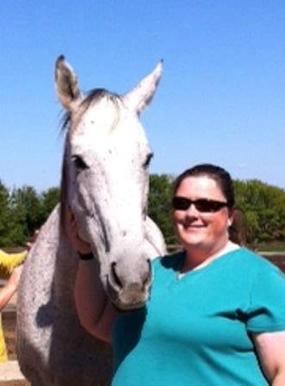 People often ask me how EAGALA model EAP/L works. It's not so easy to describe; I find a story is the best way to illustrate the concept. Here is a personal reflection from a recent EAGALA training. He was striding around the arena with long, slow steps. His elongated but refined head spoke of his noble Thoroughbred ancestry as it hung gently from his long, slender neck. He carried his neck straight and level in the loose and relaxed manner of a horse that is comfortable with himself and his surroundings. His withers protruded well above his back which dipped very slightly before it rose up and connected with his boney, angular hips. His spine protruded from his poorly muscled loin (equivalent to the small of the back) as if his skin were stretched over the ridges of a rocky mountain range. His legs were long and slender making up much of his nearly 17 hand frame as they stretched up into a gaunt and rangy body. He was lightly muscled and his angular features made him appear too thin although he was of a light but healthy weight. His tail was thin and wispy and swung gently from side-to-side as he moved. His coat was white with thousands of bay-brown flecks throughout from his face to his rump and down his legs to his grey-shaded knees and hocks. At one time he was likely a stunning steel grey colt with a noble fire in his eye and hard, sleek muscle over his impressive frame. Today he is what horsemen call a flea-bitten grey (referring to the brown flecks over the white coat); his hard, sleek muscles have given way to softer flesh stretched over his now gaunt frame. But the noble fire is still there, not in his eyes which have turned a cloudy blue with cataracts but in his very presence and the impressive, gentle energy which he exudes from every fiber of his being. I could not stop watching him as he moved easily about the arena. He seemed to float gently and effortlessly over the ground with long, slow, purposeful steps. Each time a front hoof landed, he kicked a bit of dirt up from the soft arena surface creating a tiny dust cloud. The other horses followed him as he slowly circled the arena. Sometimes he was in the lead, other times another horse led the small group but his powerful presence never changed. The facilitators asked us about the new horse. “He is a strong, quiet and gentle leader.” I said aloud. There was something about his spirit; his energy which commanded respect without fear. He didn’t need to make a lot of noise and draw attention to himself to lead effectively. He knew when to step back and let the strength of others shine. He didn’t need to be in control of everything in order to be a strong leader. As we stood in a circle and watched the horses I was so drawn to him. I wanted to see him up-close and feel his energy. As if he heard my desire, the large, Thoroughbred gelding stepped into our human circle, walked over to me and stopped. I put my hands on his neck and stroked his beautiful face. “Thank you” I whispered as he turned and strode away. My story took shape as I watched Monte. When I was able to be closer to him I could see his body bore many scars; they weren’t noticeable from a distance as they were well camouflaged by the multitude of brown flecks in his coat. The inside of his left foreleg was looked hard and lumpy and I suspected there was much scar tissue under the skin from an old injury. He looked like he had been through a lot in his life. Perhaps not always cared for in the way that he deserved; he had worked hard and given much of himself to the people in his life. The facilitators asked us to journal about our experience. This is what I wrote: September 15, 2012 I have really connected with a horse named Monte. He makes me think of me. He looks like he’s been through some shit in his life; he came out scarred, tired but still alive on the other side. He is wiser now than he was. He has a story to tell. He knows (now) how to keep himself safe (do I know yet how to keep myself safe?). He is gentle but not always understood. Sometimes people look at him and think he is broken but he is not. His spirit is strong and vibrant. The Facilitators asked us to use the horses and demonstrate the learning which had taken place for us over the weekend. I knew Monte had to be a part of this activity as I felt the most significant self-discovery had taken place for me in those first moments I saw him and realized he was a reflection of what I saw in myself. Not the part of me I try so hard to project to others; the “normal,” undamaged woman who knows just who she is and where she is going, but rather the real me. The Cheryl who was traumatized as a child, had suffered through depression, anxiety, self-hatred and fear; the woman who bore the scars of her life, both visible and hidden deep inside the dark crevices of her heart. In Monte I saw what I could be. He knew who he was and where he had been and owned it. Monte exuded a quiet strength which naturally drew others to him and he was comfortable in that leadership role. I took a lead rope and slowly walked across the arena to Monte. He had his head over the gate and was looking out across the rolling green fields to the tree-line far in the distance. He flicked an ear toward me as I approached. I spoke softly to him as I placed the rope around his neck and led him toward the center of the arena. I stood with Monte in a group of three other participants and we discussed what had taken place for each of us over the weekend. As we talked it occurred to me I should release Monte so he could do what he wanted; in this activity he was a representation of me and I knew I do not like to be stuck in one place with no freedom of choice to go or to stay. I let the rope slip gently from Monte’s slender, grey neck. Our eyes met briefly as he turned and slowly walked away. Later, as we all came together to discuss our final activity and our experience as a whole, I made one last connection between my life and Monte. I thought about how I had released him so he could go where he pleased. I thought about how I felt about the gifts God has given me and how I wanted to share them; to perhaps help others. However, I am afraid to put them out into the world. I am afraid of being rejected or humiliated. Sometimes it seems too scary to show the world my light. I thought about how for a time I held Monte close. When I finally let him go I realized he was fun to watch from a distance as well. He interacted with other people and horses and I realized by keeping him close he could not touch the lives of others. Monte became an illustration of why I need to share what I have learned, my gifts and my talents. Because I can help others; and because it is fun to watch. |
AuthorCheryl L. Eriksen, MSW, Equine Enthusiast, EAGALA groupie and writer of interesting, educational and entertaining blog posts! Archives
April 2021
|
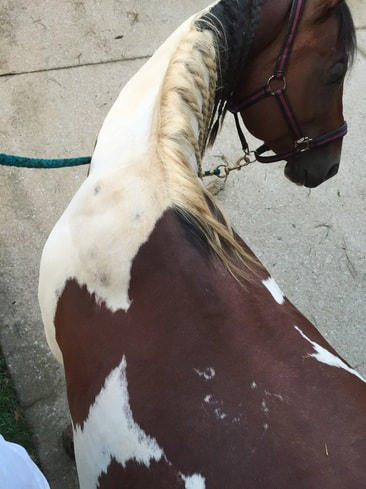
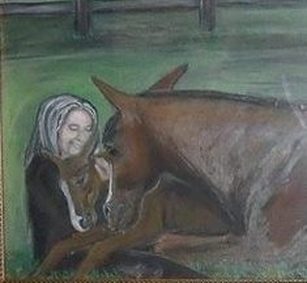
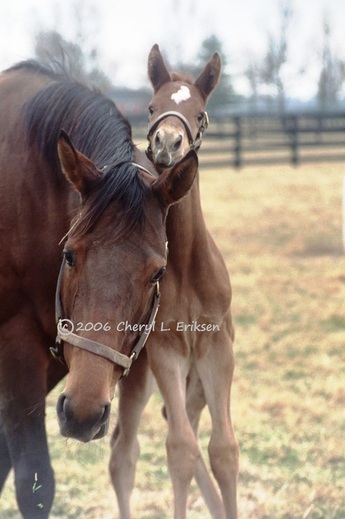
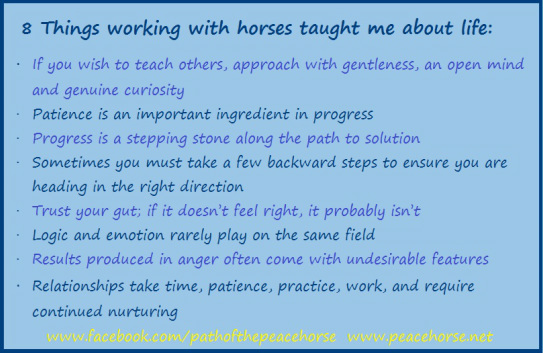
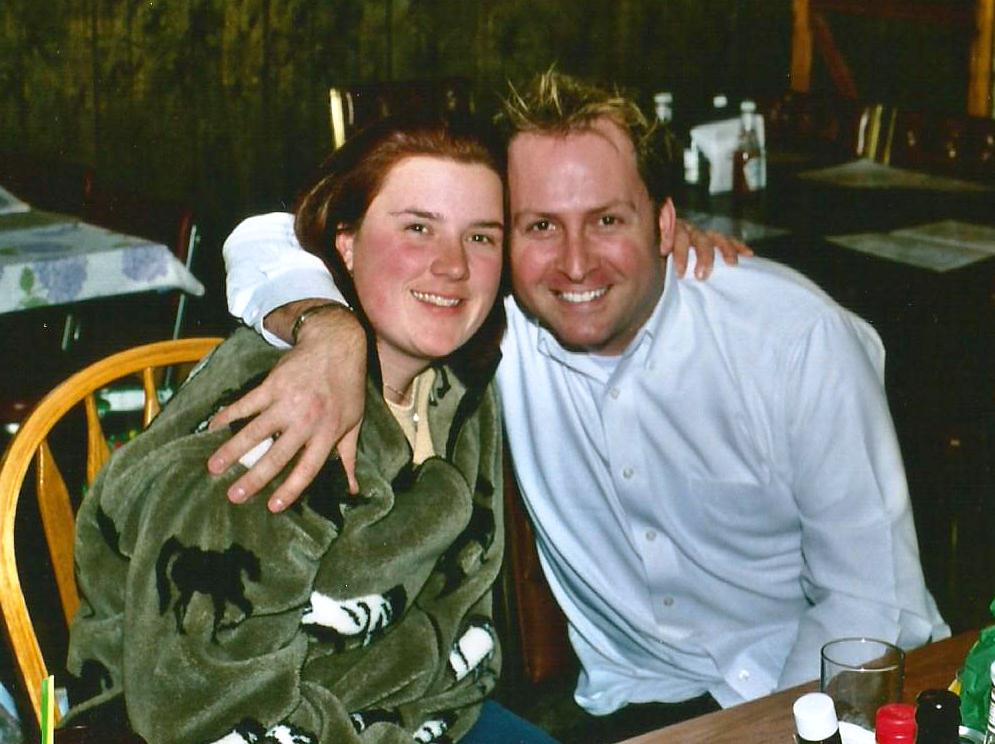
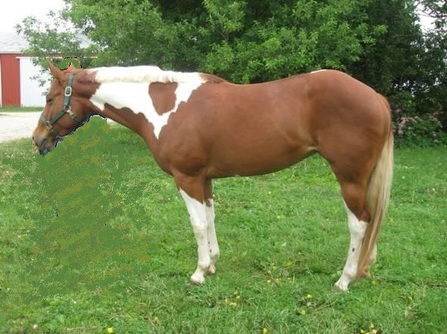
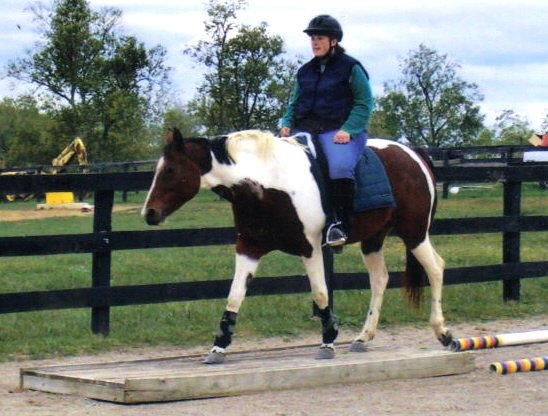
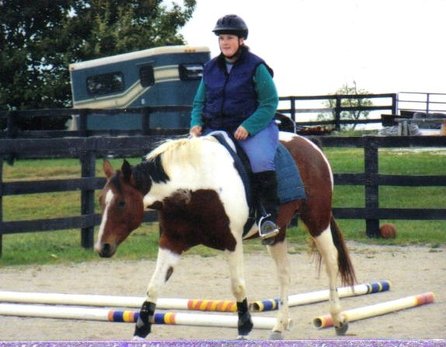
 RSS Feed
RSS Feed
